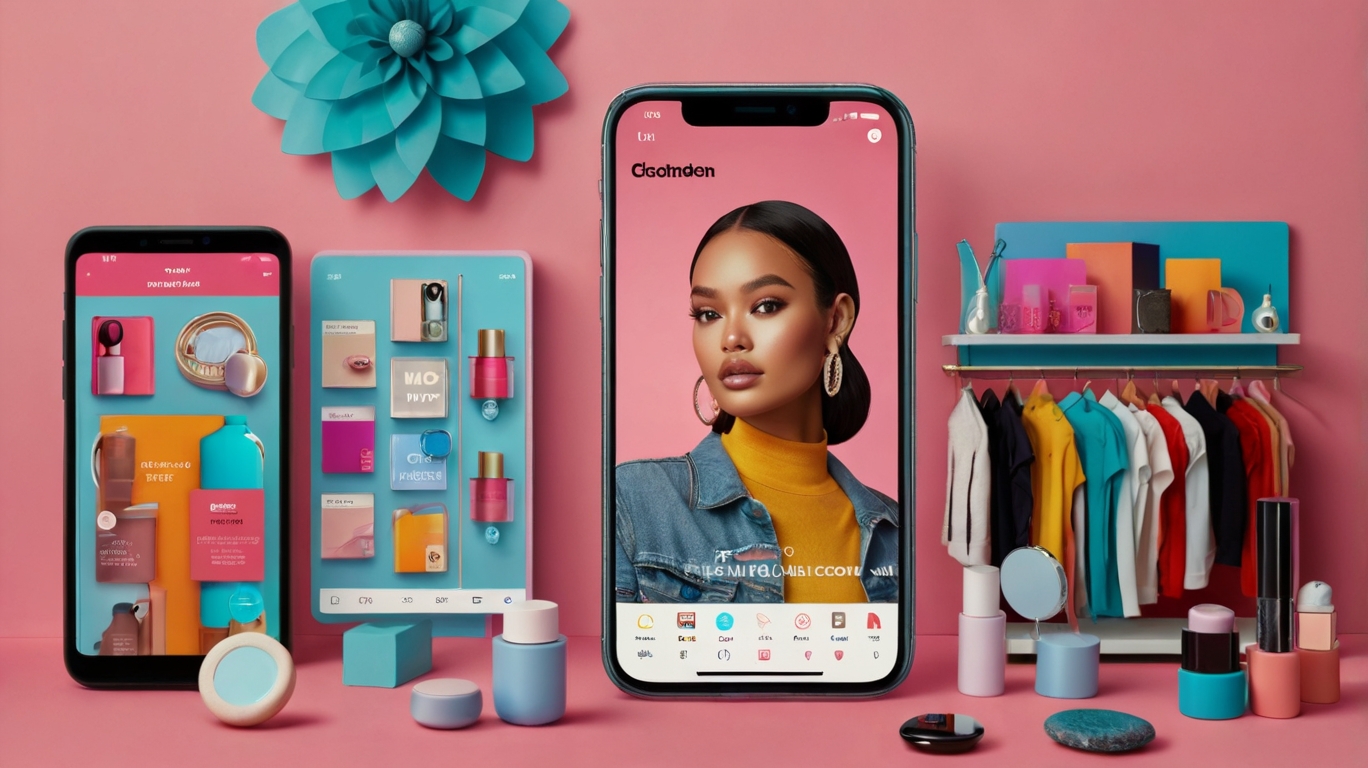In today’s fast-paced world, digital marketing has evolved into an indispensable tool for businesses looking to stay competitive and relevant. As technology continues to advance, marketers are tasked with staying ahead of the curve to deliver personalized and impactful experiences for their audiences. This article explores the latest trends in digital marketing, highlighting emerging technologies, strategies, and tools that are reshaping the industry. Whether you’re a seasoned marketer or new to the digital space, understanding these trends is essential for future success.
Introduction
Digital marketing has undergone significant transformations over the past decade. What began as simple websites and banner ads has evolved into a dynamic field that incorporates sophisticated techniques like artificial intelligence (AI), machine learning (ML), and augmented reality (AR). The trends of today reflect how businesses are adapting to the growing demands of consumers who expect personalized, seamless, and interactive experiences across various digital platforms.
As consumer behaviors shift and new technologies emerge, marketers are constantly adjusting their strategies to remain effective. Let’s delve into some of the most impactful trends currently shaping the digital marketing landscape.
1. Artificial Intelligence and Machine Learning
AI and ML are revolutionizing the way marketers interact with consumers. With AI, marketers can analyze vast amounts of data to predict consumer behavior, optimize campaigns, and enhance the customer experience. Machine learning, a subset of AI, allows systems to learn from data without being explicitly programmed. This ability to “learn” and adapt makes AI an invaluable asset in digital marketing.
Key Uses of AI and ML in Digital Marketing:
- Predictive Analytics: Marketers can predict consumer behavior by analyzing historical data and identifying trends. This helps brands to tailor their marketing efforts more effectively.
- Chatbots and Virtual Assistants: AI-powered chatbots are becoming more sophisticated and can provide real-time support to customers, improving user experience and boosting customer satisfaction.
- Personalization: AI can help brands deliver highly personalized content, product recommendations, and experiences based on individual consumer preferences and behaviors.
- Content Creation: AI tools can automate content generation, such as writing blog posts, social media updates, or ad copy. This allows marketers to scale their content marketing efforts.
With AI and ML continuing to evolve, we can expect to see even more automation and advanced data-driven decision-making in digital marketing.
2. Voice Search Optimization
The rise of voice assistants like Amazon’s Alexa, Apple’s Siri, and Google Assistant has dramatically impacted how people search for information online. Voice search is becoming an increasingly popular way for consumers to interact with devices, and as such, marketers need to optimize their content to accommodate this shift in behavior.
Why Voice Search is Important:
- Natural Language Processing (NLP): Unlike traditional text-based search, voice search queries are more conversational. Consumers tend to use long-tail keywords and natural language, making it important for content to match these conversational queries.
- Local SEO: Voice searches are often local in nature, with users asking for nearby services, restaurants, or businesses. Optimizing for local SEO is becoming more crucial as voice search usage grows.
- Faster Responses: Voice search tends to provide quicker, more concise answers than traditional search. Therefore, marketers should aim to deliver straightforward, informative content that addresses specific queries directly.
How to Optimize for Voice Search:
- Focus on conversational keywords and long-tail phrases.
- Improve local SEO strategies, including optimizing Google My Business profiles.
- Structure content in a Q&A format to address common questions consumers might ask via voice search.
As voice search becomes a regular part of consumers’ lives, businesses that effectively optimize for this technology will gain a competitive edge.
3. Video Marketing
Video marketing continues to grow in popularity, and it is no longer just a supplementary component of digital marketing strategies; it is the core. From short-form TikToks to in-depth YouTube tutorials, video content engages audiences like no other medium.
Video Marketing Trends:
- Short-Form Videos: Platforms like TikTok, Instagram Reels, and YouTube Shorts have ushered in a new era of short-form videos. These bite-sized videos are ideal for quick, engaging content that captures attention.
- Live Streaming: Live video continues to gain traction, especially on platforms like Facebook, Instagram, and YouTube. Businesses can use live streaming for product launches, behind-the-scenes content, or real-time customer interaction.
- Shoppable Videos: Interactive videos that allow consumers to make purchases directly through the video are gaining popularity. This seamless shopping experience enhances the customer journey and boosts conversion rates.
- Personalized Videos: Video personalization takes content customization to the next level by addressing the viewer by name or tailoring content based on their previous behavior. This level of personalization can drive higher engagement and conversion.
Tips for Effective Video Marketing:
- Focus on delivering value quickly. Attention spans are shorter, so get to the point within the first few seconds.
- Incorporate storytelling to make your videos more relatable and memorable.
- Use captions and subtitles for accessibility and to cater to viewers who may watch videos without sound.
Video marketing remains one of the most powerful ways to connect with audiences, and as new technologies emerge, the possibilities for video content will continue to expand.
4. Influencer Marketing
Influencer marketing has been on the rise for several years, but it continues to evolve as more brands realize its effectiveness in reaching targeted audiences. Rather than relying solely on traditional advertising, companies are turning to influencers to promote their products in authentic, relatable ways.
Why Influencer Marketing Works:
- Authenticity and Trust: Influencers have established trust with their audiences. When they endorse a product, it feels more genuine and trustworthy than a traditional advertisement.
- Targeted Reach: Influencers have niche audiences that businesses can tap into, ensuring that their marketing efforts are directed at the right people.
- Content Creation: Influencers often create high-quality, engaging content that businesses can repurpose for their own channels.
Emerging Trends in Influencer Marketing:
- Micro-Influencers: Rather than focusing on mega-celebrities, brands are now working with micro-influencers—individuals with smaller, more engaged followings. Micro-influencers often boast higher engagement rates and more niche audiences.
- Long-Term Partnerships: Brands are moving away from one-off influencer collaborations and opting for long-term partnerships. This allows for more authentic, ongoing promotions and deeper connections with audiences.
- Influencer-Led Campaigns: Some brands are giving influencers more creative freedom to design their campaigns. This results in content that feels more organic and better aligns with the influencer’s style.
For brands looking to leverage influencer marketing, it’s important to choose the right influencers whose values and audience align with the business.
5. Augmented Reality (AR) and Virtual Reality (VR)
The adoption of AR and VR technologies is transforming the customer experience, offering more immersive and interactive ways for consumers to engage with brands. From virtual try-ons to 360-degree product views, AR and VR are enhancing how businesses market products and services.
Applications of AR and VR in Digital Marketing:
- Virtual Product Try-Ons: Brands in the fashion, beauty, and retail sectors are using AR to allow customers to virtually try on products before making a purchase. This enhances the shopping experience and helps reduce return rates.
- Immersive Brand Experiences: VR can create fully immersive brand experiences, allowing consumers to interact with a product or service in a virtual space. This is particularly useful for real estate, tourism, and entertainment industries.
- Interactive Advertising: AR enables interactive ads that engage users in new and innovative ways. For example, consumers can scan a print ad or a product packaging to unlock additional content or discounts.
Why AR and VR Matter:
- They provide unique, memorable experiences that enhance brand recall.
- They allow for more effective demonstrations of products and services, especially for complex or high-involvement purchases.
- AR and VR can bridge the gap between online and offline experiences, making the digital shopping journey more tangible.
As AR and VR technology becomes more accessible, we can expect an increase in its use across various industries.
6. User-Generated Content (UGC)
User-generated content (UGC) has become an essential part of modern digital marketing strategies. UGC refers to any content created by consumers, whether it’s a review, a social media post, or a video that features a brand or product.
Why UGC is Important:
- Authenticity: UGC feels more genuine than branded content, which resonates more with consumers looking for authentic experiences.
- Engagement: Encouraging customers to share their own content helps increase engagement and creates a sense of community around a brand.
- Cost-Effective: UGC reduces the need for costly content creation, as businesses can repurpose content from their customers.
How to Leverage UGC in Marketing:
- Run hashtag campaigns to encourage users to share their experiences.
- Feature customer stories and testimonials on social media and websites.
- Create contests or challenges that incentivize users to create and share content.
UGC is a powerful marketing tool that strengthens brand loyalty and fosters a sense of community among consumers.
Conclusion
The digital marketing landscape is constantly evolving, and staying up-to-date with the latest trends is crucial for marketers who want to remain competitive. From artificial intelligence and voice search optimization to video marketing and influencer strategies, businesses must adapt to new technologies and consumer behaviors in order to succeed.
As the digital marketing industry continues to grow, we can expect even more innovative trends to emerge. By staying agile and embracing these trends, businesses can create more personalized, engaging, and effective marketing strategies that resonate with today’s tech-savvy consumers.
For more insights into the latest trends and digital marketing strategies, check out GPT Online.


